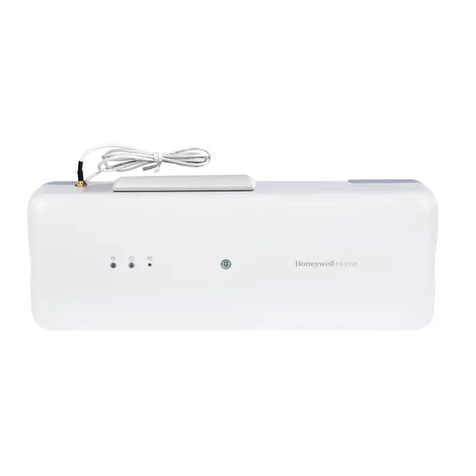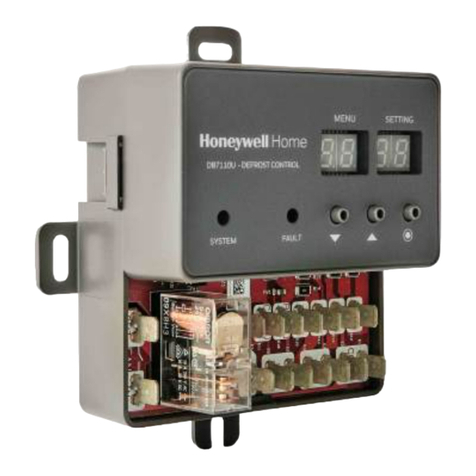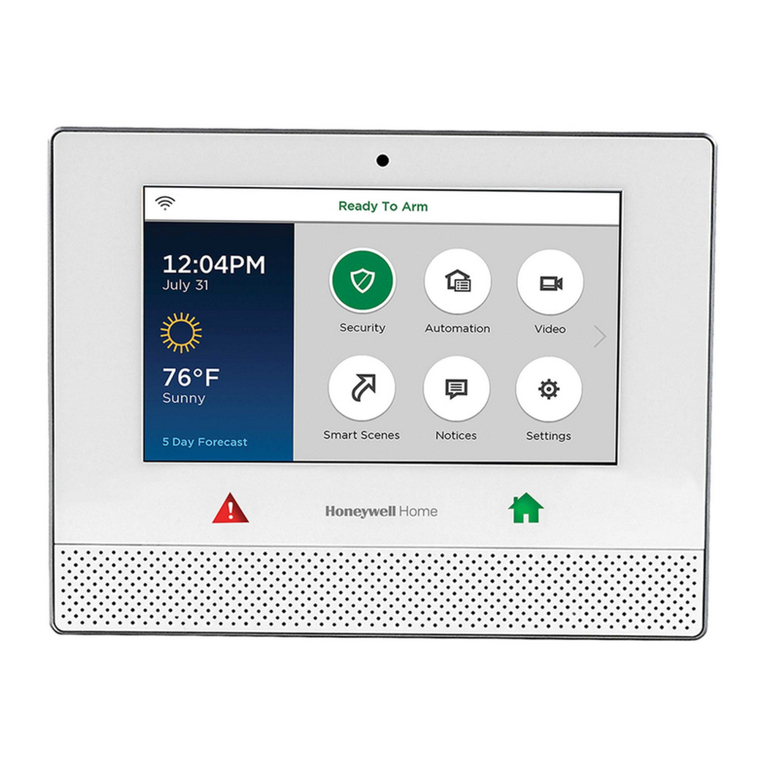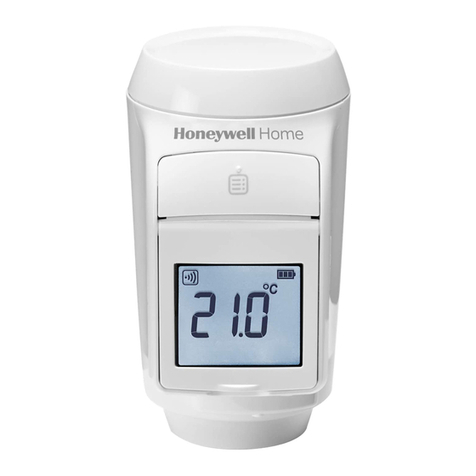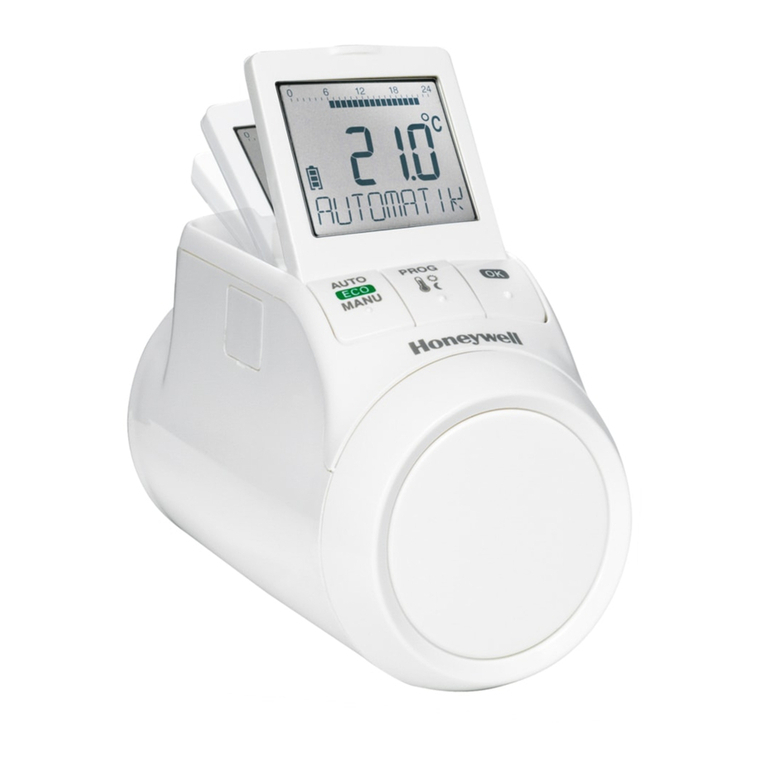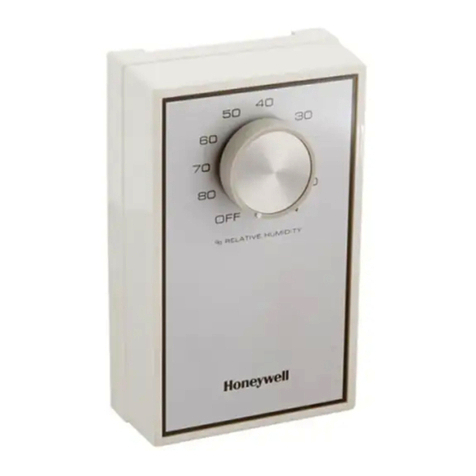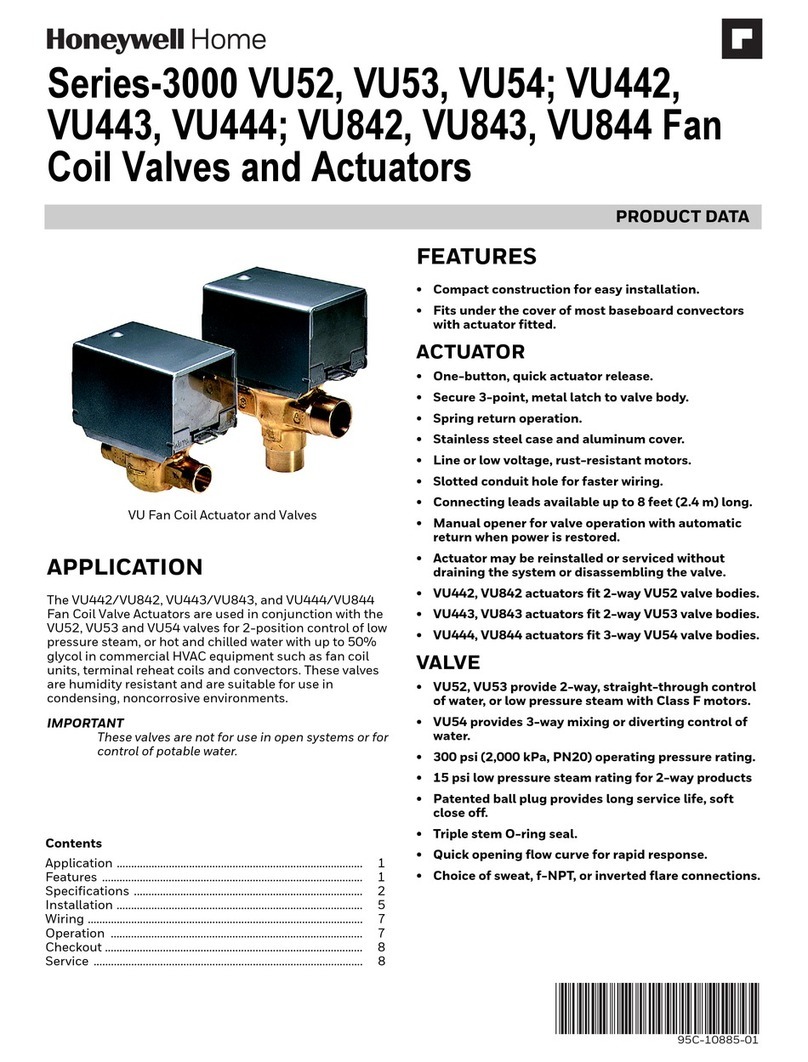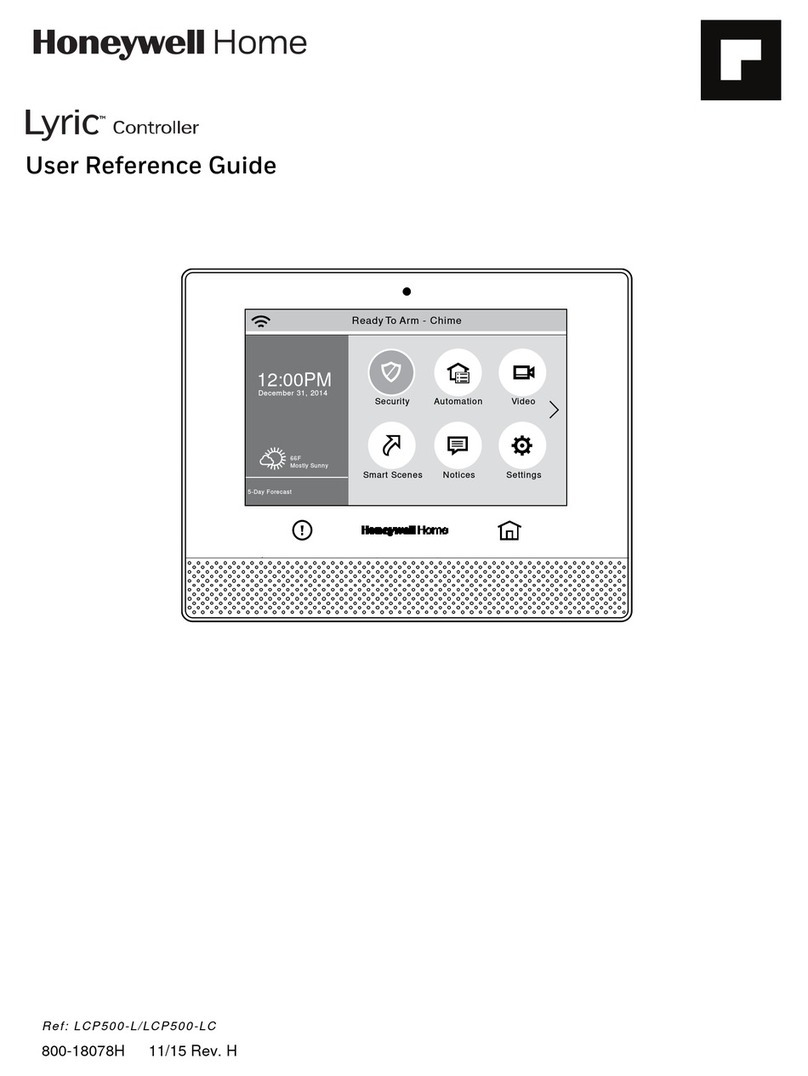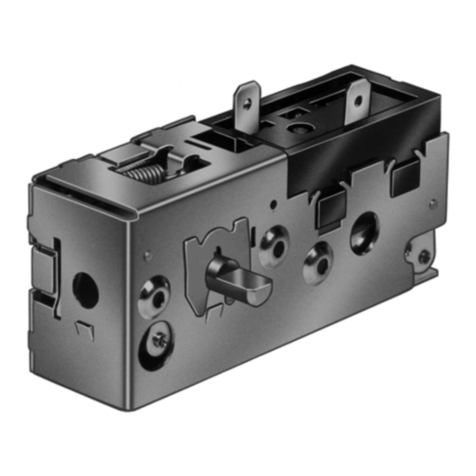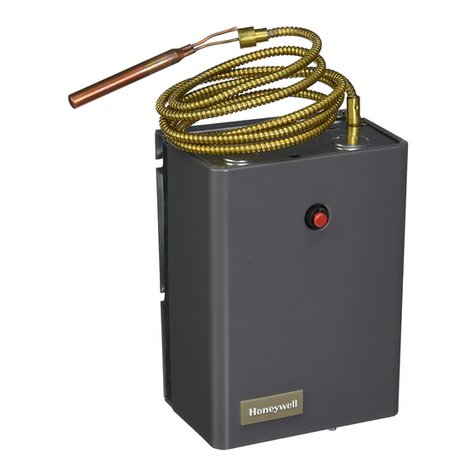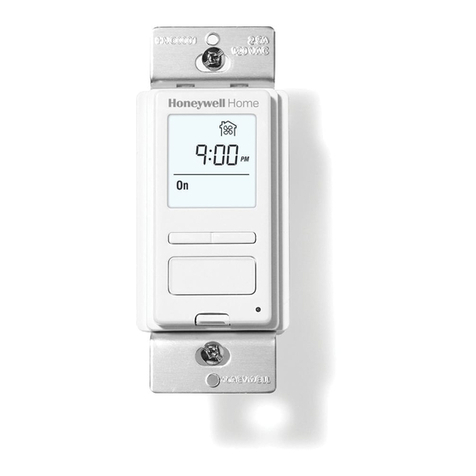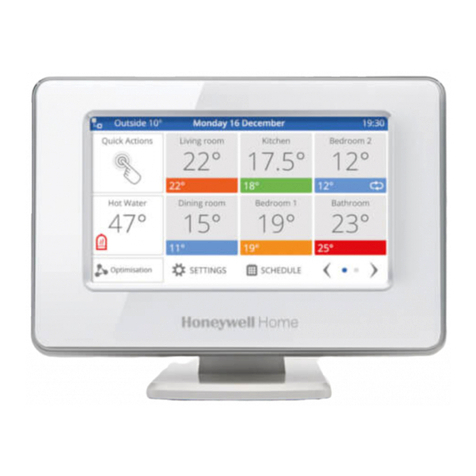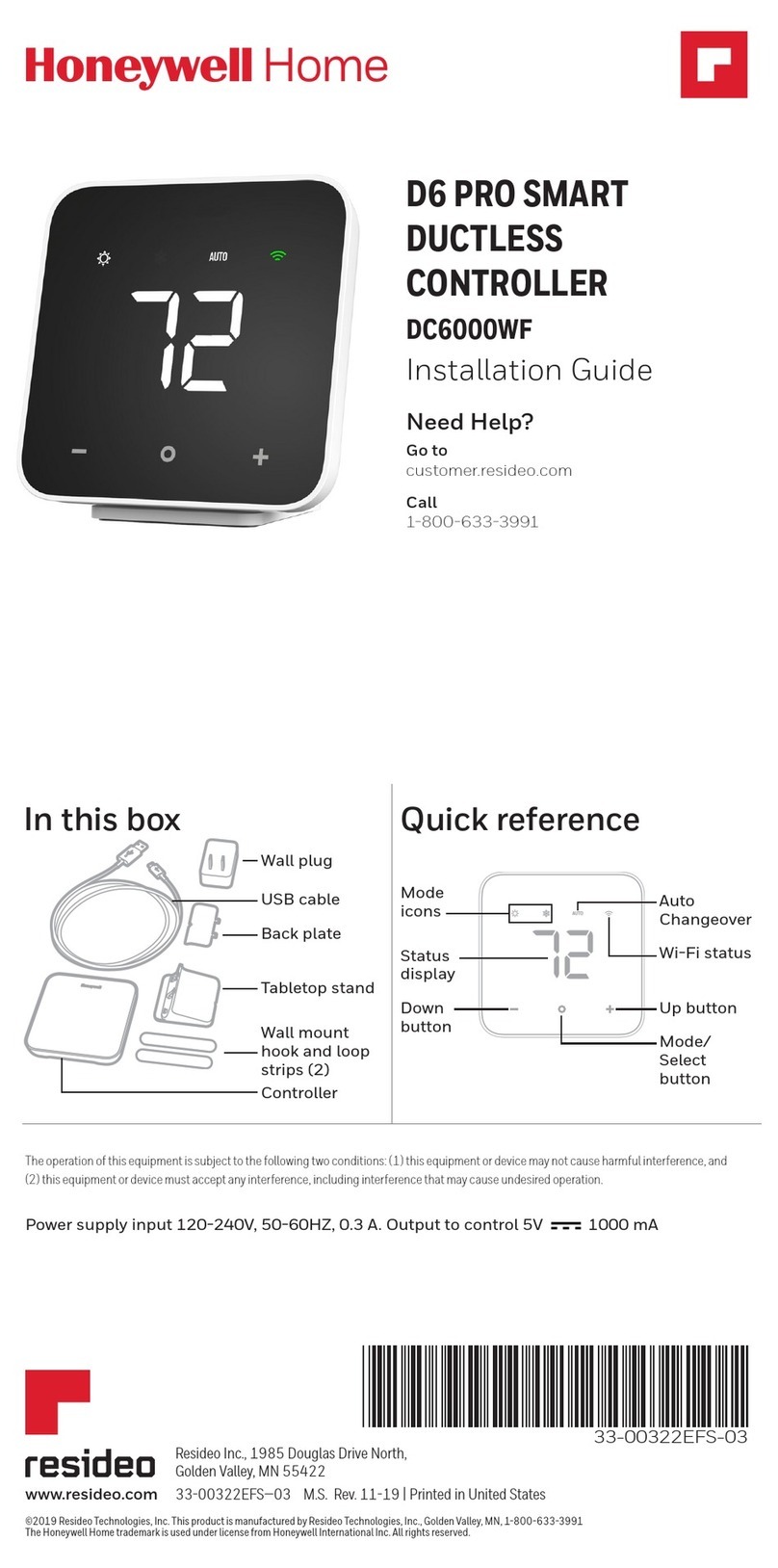
9
Manual changing of the room setpoint
temperature
Description of the parameters
Parameter 2 – Backlight
The displayhasabacklightfor reading the information.
•
The backlight isON whenthe adjustmentdialis
turned or a button is pressed.
•
The backlight switches OFF if no action is carried
outattheradiatorcontrollerforapprox.7secondsin
order to save battery power.
Parameters 3 to 5 – Window function
In order to save energy the radiator controller closes the
radiator valve when you open a window resulting in a
large drop of the temperature.
When you close the window so that the temperature
rises the radiator controller opens the radiator valve
again.
When the duration of the window function (factory
setting: 30 minutes) has expired, the system controls
to the current room setpoint temperature again. Frost
protection is ensured during the window function.
Parameter 6 – Valve stroke
The radiator controller operates with the optimum valve
stroke set in the factory.
Ifthe entire valve stroke is tobeusedor if the valve does
notopencompletely,activatethe full-strokemode.
Parameter 7–Temperature representation in the
display
•
In the factory setting the room setpoint temperature
is displayed.
•
With the setting "measured temperature" the
measured room temperature is displayed. A
changeovertotheset temperatureis carried out by
turningtheadjustment dialor pressingthe button.
Ifrequired, the temperaturecannowbe reset. The
displayreturnsto themeasuredtemperatureafter
approx. 3 seconds.
Due to the heat influence of the radiator the
"measured temperature" displayed at the radiator
controller can differ from the temperature measured
at another point in the room.
Parameter 8 – Temperature offset
Since the radiator controller measures the room
temperature inthe areaof the radiator,it ispossible
that this temperature deviates from the temperature
measured at a different point in the room.
If,forexample, 20°Cis measured inthe roomand
21.0°Cattheradiator,thiseffectcanbe compensated
by an offset of –1.0 °C.
Parameter 10 – Display of the valve position
Whenthis parameter is activated(setting"1"),the
calculated valve position (0 ... 100% opened) is
displayed momentarily.
The main display is shown again after approx. 3 minutes.
Tocancel,select
exit
andpressthe
button.
Parameter 11 – Window open function
•
Ifawindow contact is connected,the parameteris set
automatically to "2"(cabled).The windowfunctionis
controlled by the window contact.
•
If no window contact is connected,the setting "0" or
"1" has to beselected.
6. Further functions
The room setpoint temperature can bechanged at any
timebymeansoftheadjustment dial.Thechangedroom
setpointtemperatureremainsineffect until thenext
switching point.
The symbol
showsthat thetemperaturewas
changed manually. The symbol extinguishes when the
next setpoint isreached.
Byturningtheadjustment dialanti-clockwiseuntil
off
is displayed,thevalvewill be closedpermanently.
Withthissettingthe timeprogramof thecentral
operatingdeviceisnolonger activeforthisradiator
controller, but frost protection is guaranteed if the
heating is switched on.
Display of the room name
Ifthecentraloperatingdevicecantransmit theroom
name(zonename),liketheevotouch,theroom
nameis displayedat the radiatorcontroller (max. of
9 characters).
f
Press
button.
The roomname(zonename)isshownbriefly inthe
display.
